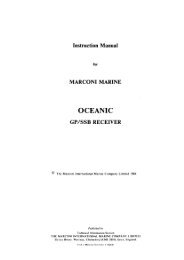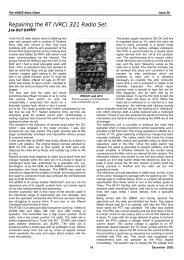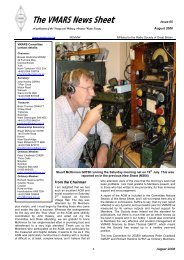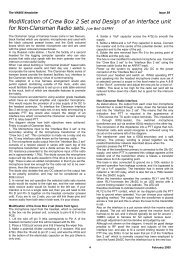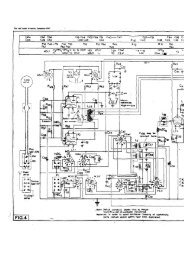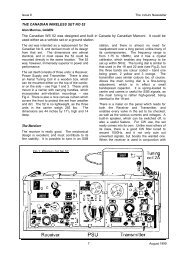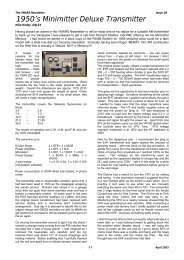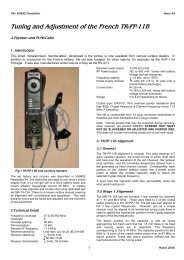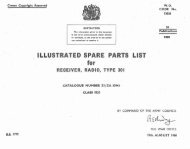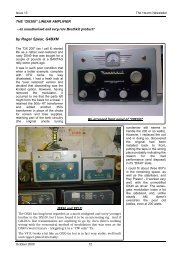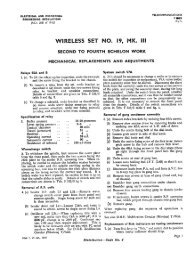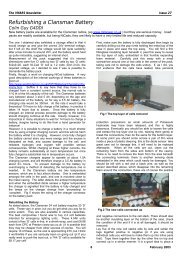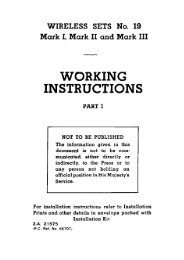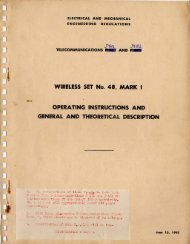2115_ Gee_MkII_Tropical.pdf - VMARSmanuals
2115_ Gee_MkII_Tropical.pdf - VMARSmanuals
2115_ Gee_MkII_Tropical.pdf - VMARSmanuals
You also want an ePaper? Increase the reach of your titles
YUMPU automatically turns print PDFs into web optimized ePapers that Google loves.
~<br />
44. The anode.circuit of V3 has a resist- much larger resistance than R21. This drop<br />
ance R20 in series with a normal load R21, in potential will be determined by the<br />
R20 is lOOK and R21 is 4.7K. The junction anode current taken by the valve V3.<br />
of R21 and R20 is joined to the bottom<br />
end of the grid coil through the 510K 47. The anode current taken by V3 is<br />
resistance R16. The lower end of the adjusted to be 2.1 M/a, and this will cause *<br />
grid coil is connected through another 510K the junction of the resistors KO and ~1<br />
resistor to a negative H.T. rail of aPProx- to be at a potential 100 volts positive with<br />
imately 110 volts.<br />
res~ect to earth. The resistances R16 and<br />
~ l are equal in value so that the grid of<br />
45. The junction of R21 and R20 is V3 will take up a potential mid-way between<br />
by-passed to earth by the condenser C12 and 100 volts positive and 110 volts negative,<br />
the lower end of the grid coil is by-passed i.e. 5v. negative with respect to earth.<br />
to earth by the condenser C10. A condenser<br />
connected across the resistor R16 completes<br />
a condenser potentiometer between<br />
the grid and anode circuits of V3. The<br />
circuits for the valves V4 and V5 are almost<br />
identical with that for V3 except that values<br />
of some of the condensers in the potentiometer<br />
chain are different.<br />
46. The main H.T. line is 300v. positive<br />
with respect to earth, whilst the nesative<br />
rail is at a potential of 110v. below earth.<br />
The potential at the junction of the resistors<br />
R21 and R20 will depend upon the drop in<br />
potential across R20 since this is a very<br />
48. The anode current-grid voltage<br />
curves of fig. 29 help to explain the operation<br />
of the stage. Consider the curve where a<br />
small C.W. jamming signal is applied to<br />
the grid of V3. together with the required<br />
pulse signal. The C.W. signal will tend to<br />
drive the grid more positive and make the<br />
valve take more anode current. An increase<br />
of mean anode current will cause a<br />
greater drop in potential across W2, so<br />
that the grid will take up a potential more<br />
negative with respect to earth. The feedback<br />
arrangement thus tries to keep the mean<br />
anode current of the valve constant.<br />
Fig. 22.-R.F.<br />
unit, type 27B. Side view.



